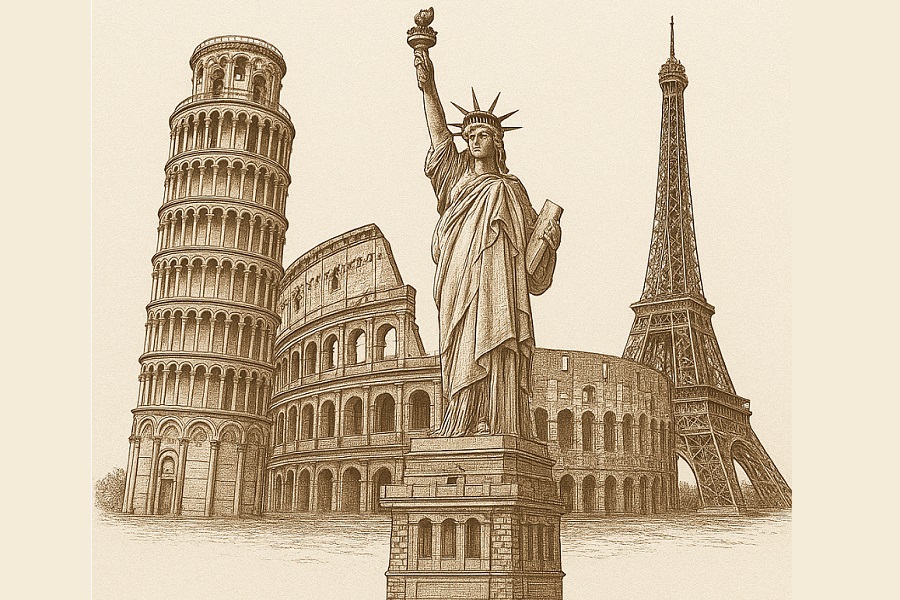
Follow us Now on Telegram ! Get daily 10 - 12 Interesting Updates. Join our Telegram Channel https://t.me/OhWomen
Download Telegram App before Joining the Channel
When we think of travel, iconic landmarks often top the list of must-see destinations. The Eiffel Tower, the Great Wall of China, the Taj Mahal — these monuments are instantly recognizable symbols of culture, history, and architectural brilliance. But beyond their postcard-perfect images lie fascinating untold stories that add layers of mystery, intrigue, and human spirit to their legacy.
The Eiffel Tower: More Than Just a Parisian Icon
While millions visit the Eiffel Tower every year, few know that it was initially met with criticism. When Gustave Eiffel designed this iron masterpiece for the 1889 World’s Fair, many Parisians thought it was an eyesore. It was even slated for demolition after 20 years! What saved it was its strategic use as a radio transmission tower, helping France in World War I and later becoming a symbol of modernity and resilience.
The Great Wall of China: Built by Thousands of Hands
Often described as the longest wall in the world, the Great Wall’s construction spanned centuries and several dynasties. What’s rarely told is the human cost behind it — hundreds of thousands of laborers, soldiers, and prisoners worked under brutal conditions. Many perished, and some were reportedly buried within the wall itself, making it not just a structure but a silent memorial to sacrifice and endurance.
The Taj Mahal: A Monument of Love and Loss
The Taj Mahal’s breathtaking beauty is well-known, but the story behind it is equally poignant. Emperor Shah Jahan built this white marble mausoleum in memory of his beloved wife Mumtaz Mahal. However, few remember that after its completion, Shah Jahan was imprisoned by his own son and spent his last years gazing at the monument from afar. The Taj Mahal thus stands as a testament to love’s triumph and the tragic twists of fate.
Machu Picchu: The Lost City of the Incas
Machu Picchu remained hidden from the world until American historian Hiram Bingham rediscovered it in 1911. Built in the 15th century, this Incan citadel’s true purpose is still debated. Some believe it was a royal estate; others suggest a sacred religious site. Its precise location atop the Andes and sophisticated stonework highlight the Incas’ incredible engineering skills, but its abandonment remains a mystery shrouded in the misty mountains.
The Statue of Liberty: A Gift with a Political Backdrop
The Statue of Liberty is a universal symbol of freedom, but its history is steeped in political nuances. Gifted by France in 1886, it was initially met with skepticism in the U.S., with debates about its cost and significance. Less known is the fact that the statue’s full name is “Liberty Enlightening the World,” and it was intended as a symbol of friendship between nations, abolition of slavery, and hope for immigrants arriving on American shores.
Why These Stories Matter
Knowing the untold stories behind iconic landmarks enriches the travel experience. These stories remind us that every monument has witnessed countless lives, struggles, and dreams. They invite us to look beyond the surface, connect with history, and appreciate the resilience and creativity of humankind.
So next time you visit a famous landmark, pause for a moment to wonder about the hidden tales it holds — you might just uncover a new layer of awe and inspiration.